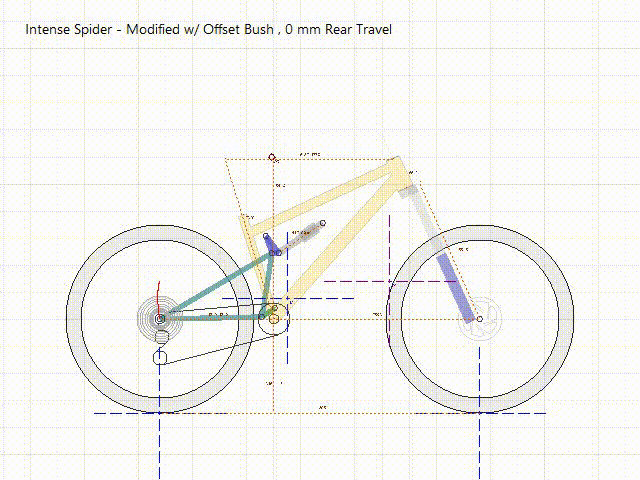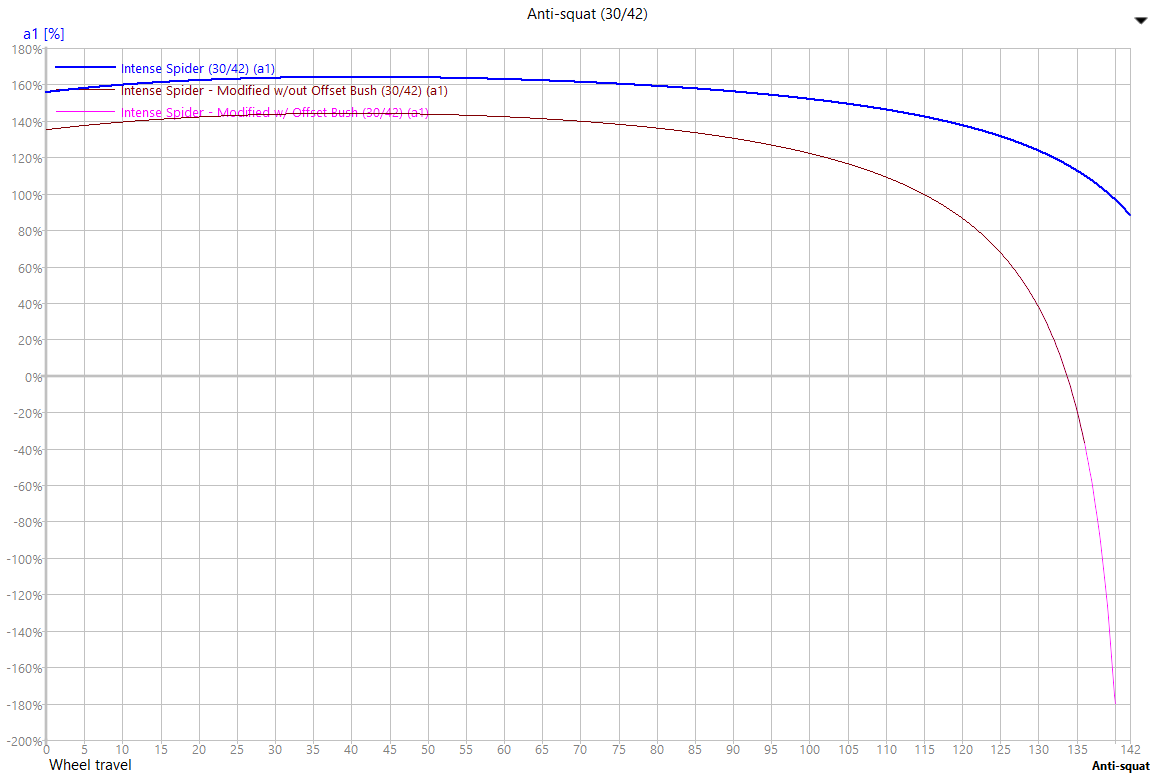Almost two years later, I’m finally following up on my last post with an analysis of my bike’s suspension dynamics. If you haven’t seen the other post yet, I recommend reading it first. The goal here is to figure out if the changes outlined there have affected dynamics positively or negatively, and if the latter, what can be done to improve them.
Like the last post, this post will go into pretty significant technical detail. If you don’t know anything about suspension dynamics but want to follow along, this website is a great primer.
I bought a copy of Linkage and started by characterizing a stock version of my bike using an image I pulled from the internet. I also characterized my (modified) bike - with and without the offset bushing I added in the last post. I then used the software to overlay plots of various parameters for each bike together, starting with leverage ratio:
So it looks like the modifications made by the previous owner significantly reduced the leverage ratio overall, but didn’t change progressivity much, except toward the end of the travel. I’d put this down to the added length of the upper link. Adding the offset bushing scaled the curve upward and outward, and reduced progressivity overall. Interestingly, there is a sharp curve inversion near the end of travel. At this point, the eye of the shock appears to be moving nearly orthogonally to the length of the shock. I think I got lucky that the shock stroke ended before leverage ratio diverged much farther - and that I didn’t get greedy with the offset bushes. In the worst case, the shock could crash into the top tube and get “stuck” pushing the rocker link upward instead of down!
I can’t say I’ve noticed this effect at all while riding, and I wonder if it’s even there at all, or if it’s a function of the inaccuracy of my measurements. Not that it would be extremely salient, given that it would only ever occur near or at a bottom-out. Though it would theoretically increase the chance of a bottom-out, should you make it beyond a certain point in the travel.
Playing around with the software, I found that the effect could be eliminated by shifting the rear triangle pivot point downward by ~2 mm. Though if I wanted to test it, I would definitely want to start by getting better measurements.
Moving on to anti-squat, it looks to be reduced by ~20% in the lowest gear ratio:
Though kickback is also reduced throughout the travel, thankfully more toward the end of travel:
The axle path has moved forward:
And finally, anti-rise has been reduced, particularly at the end of travel:
This is the only graph in the set that gives me pause, since anti-rise diverges below zero toward the end of travel. Though I really don’t know if I’d notice that deep into the travel - if anything, I would imagine it could help prevent bottom-outs.
Interestingly, the graphs do not indicate an increase in travel, which was the ostensible goal of the modifications according to the previous owner. This makes sense from a high level, since even though the shock gained travel, replacing the upper link likely reduced the overall leverage ratio enough to negate the longer stroke.
Taken together, I wouldn’t characterize these changes as better, and I might actually characterize them as slightly worse. It’s almost like those engineers at Intense optimized the suspension geometry somehow, and these changes moved the geometry away from that locus. However, I would guess that the effects of the changes on the bike’s overall geometry (slacker HTA, larger front center) were worth the trade-off in suspension kinematics - at least for the way I ride.
And now that I’ve had a chance to go through this exercise, I don’t think I’ll be making any more changes any time soon.





